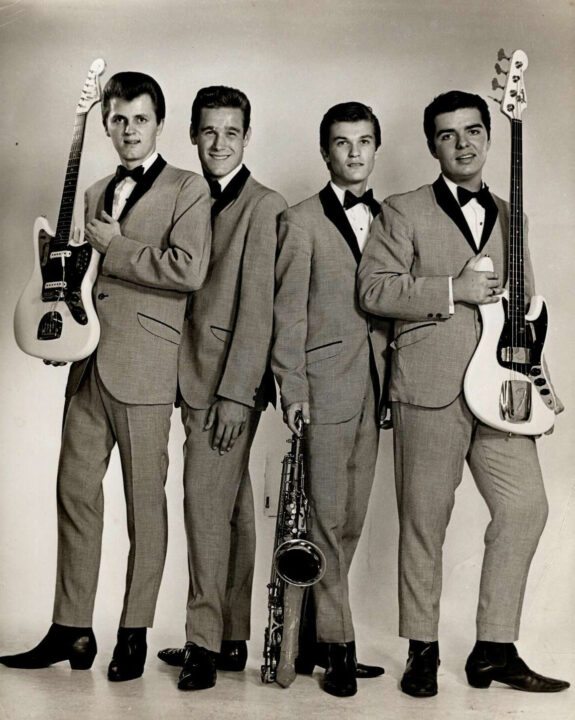
This tale of forgotten Detroit rockers begins in the Stockwell family basement in the early 1960s as Rick Stockwell formed the Coronados and his brother Joe formed the Nomads. Learning about rock ‘n’ roll through his older half-brothers was Michael Marsac. His first group, Old Friends, was an all-acoustic group with Dave Anderson, Ken Crawford and Johnny Heaton, later of the West End.
Managed by Cecil, the father of the band’s Jerry Schemmel, the Coronados appeared on WKHM disc jockey Robin Seymour’s CKLW-TV Channel 9’s television show, Swingin’ Time. Featuring Rick Stockwell on electric bass, the Coronados were rounded out with Bob Stayton on guitar, Bill Goddard on drums, Jerry Schemmel on saxophone, and Gene Gustafson on keyboards.
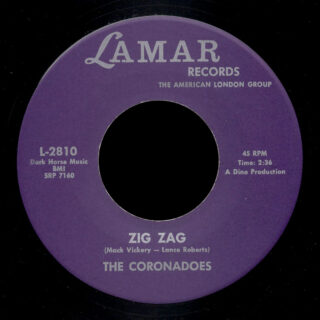 The Coronados soon had the support of a country music song-smith known for writing songs for Johnny Cash, Waylon Jennings, George Jones, and Jerry Lee Lewis. Mick Vickery produced and arranged four sides for the band across two singles. The first, “The Nomad” b/w “Center of Attraction,” was issued in 1965 on Paramount Pictures Productions’ musical division, Dot Records. Issued that same year—and with the “e” added—the Coronadoes recorded Vickery’s “Zig Zag” backed with an original, “What Would I Do,” for Dino Productions on Nashville’s Lamar Records.
The Coronados soon had the support of a country music song-smith known for writing songs for Johnny Cash, Waylon Jennings, George Jones, and Jerry Lee Lewis. Mick Vickery produced and arranged four sides for the band across two singles. The first, “The Nomad” b/w “Center of Attraction,” was issued in 1965 on Paramount Pictures Productions’ musical division, Dot Records. Issued that same year—and with the “e” added—the Coronadoes recorded Vickery’s “Zig Zag” backed with an original, “What Would I Do,” for Dino Productions on Nashville’s Lamar Records.
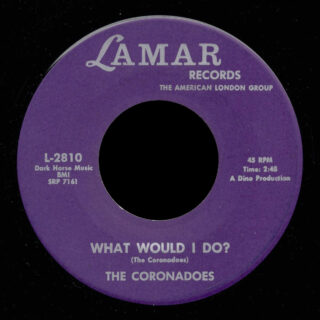
The Vickery deal was the culmination of the band winning the Michigan State Fair’s annual “Battle of the Bands” talent show, along with winning the Starlit Stairway’s Talent Show hosted by Rita Bell (the station’s meteorologist) on WXYZ-TV Channel 7 in 1963, in addition to a well-received opening slot for a Walled Lake, Michigan, appearance by Frankie Valli and the Four Seasons. As the Vietnam War arrived, the Coronados splintered as result of Rick Stockwell and Jerry Schemmel’s service. Schemmell wouldn’t return home.
Above: Ron Course’s photo montage video featuring all four sides: Dot 45 first, followed by the Lamar single.
Once back in the states, Rick Stockwell, along with his brother Joe, joined fellow Vietnam veterans-friends Larry Merryman and Gary Markley in the Detroit-based jam-band collective, Stonefront: a band known for overseeing the Gar Wood Mansion commune located at 450 Keelson Drive, Detroit, on Greyhaven Island located on the Lower Eastside of the Detroit River. During the years of 1969 to 1972, with an ever-changing roster (featuring ex-Coronados’ guitarist Bob Stayton, along with drummer Jeep Capone and guitarist Rod Shivers of Seeds of Doubt), Stonefront hosted rent parties attended by—with the bands sometimes performing a second, free show after their gigs at the Cobo Arena, Eastown Theatre, and The Grande Ballroom—Cream, Joe Cocker, Iron Butterfly, the Rolling Stones, and Leon Russell.
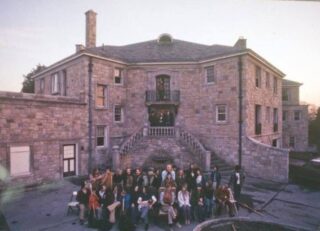

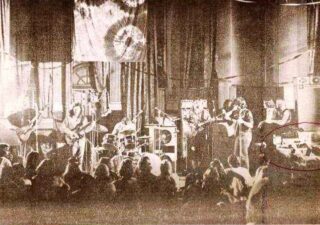

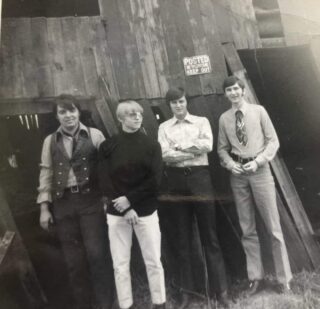
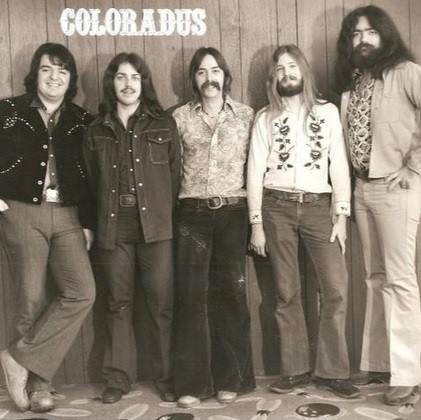
By 1971 the Stockwell brothers—along with their then 16-year-old half brother, Michael Marsac—formed the country-rock driven Coloradus. By the mid-‘70s Coloradus consolidated their regional, Great Lakes-area success to the point of opening shows for Detroit-touring national acts, such as the like-minded .38 Special. 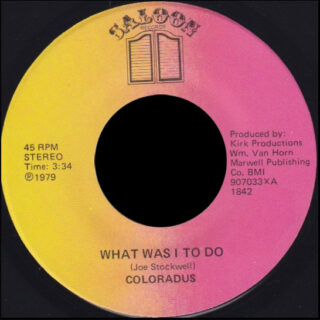 Guided by producer Calvin Simon, formerly of Parliament/Funkadelic, Coloradus cut an album at Chess Records in Chicago. As is the case with new bands hoping to generate a hit single, Coloradus recorded two cover tunes by the Allman Brothers to complement their southern-rock styled originals. Unfortunately, the planned release stagnated for a variety of reason lost to the times, but mainly due to Rick Stockwell suffering an “accident-sustaining injury.” The band eventually rebounded with a 45-rpm single issued on the band’s vanity-press Saloon Records in 1979, fronted by Rick Stockwell’s “What Was I Do To” and Michael Marsac’s “Good Lovin’” on the B-side.
Guided by producer Calvin Simon, formerly of Parliament/Funkadelic, Coloradus cut an album at Chess Records in Chicago. As is the case with new bands hoping to generate a hit single, Coloradus recorded two cover tunes by the Allman Brothers to complement their southern-rock styled originals. Unfortunately, the planned release stagnated for a variety of reason lost to the times, but mainly due to Rick Stockwell suffering an “accident-sustaining injury.” The band eventually rebounded with a 45-rpm single issued on the band’s vanity-press Saloon Records in 1979, fronted by Rick Stockwell’s “What Was I Do To” and Michael Marsac’s “Good Lovin’” on the B-side.
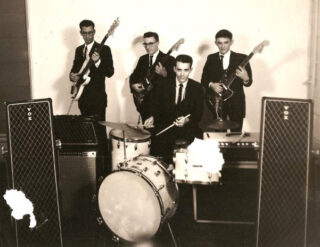
In between the career development of the Coronados and Coloradus, the Stockwell brothers—as well as other Coloradus members, such as long-time Stockwell associate, drummer Ronald Course—strolled through the turnstiles of Detroit’s iconic Danny Zella. Zella—with the ampersand moniker The Zell Rocks—graced Detroit stages since the late 1950s with national and regional hit singles, such as “Black Sax,” “Wicked Ruby,” “Steel Guitar Rag,” a cover of Leiber and Stoller’s “Kansas City,” and “Sapphire.” Later opting for the Zeltones suffix by the early ‘70s, Zella became a fixture on Michigan and Great Lakes-area stages as he provided a “rock ‘n’ roll boot camp” for those musicians who invaded the Gar Wood during its progressive rock years. It was through Danny Zella, and his band’s eventual transition into Kottage, then his retirement from the stage, in which Coloradus, birthed.
Prior to the mid-70s arrival of the Stockwells’ Coloradus, the brotherly duo performed alongside Johnny Heaton in White Heat. That band’s rotating roster featured ex-Zeltones and Coloradus drummer Ronald Course, Dale Kath of the Ascots, as well as Dave Anderson and Ken Crawford of Mike Marsac’s Old Friends.
While the Stockwell brothers are no longer with us, Michael Marsac continues to record and perform in the Big Rapids area of western Michigan as part of the musical concern, Michigan Soul Tribe. Dale Kath and Ronald Course currently record on the Detroit scene as the Blue Room Band.
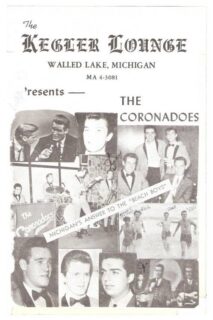
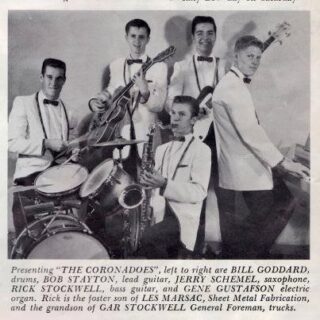
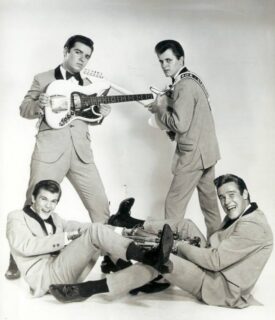
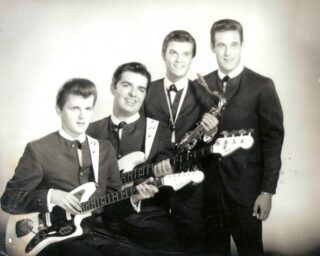
Article by R.D Francis.
All band photos (banner and You Tube video) provided by Mike Marsac via Ron Course. Coronadoes Lamar 45 scans by Chris Bishop, Coloradus scan courtesy of Discogs.
Other stills of the Corondoes, dated between 1963 to 1965, were provided by Richard Bernard via Christine Evans.

Ron Course appears on the lost, early-1976/1977 home studio demos of Ted “The Phantom” Pearson’s next concern, Pendragon. The below audio montage features Ron with the following Detroit bands:
Bliss — Country Girl (featuring Ron Course on lead vocals)
Coloradus — Love Shock
Nightflier — We’re an American Band
Shotgun Willie Band — Lonely Tears

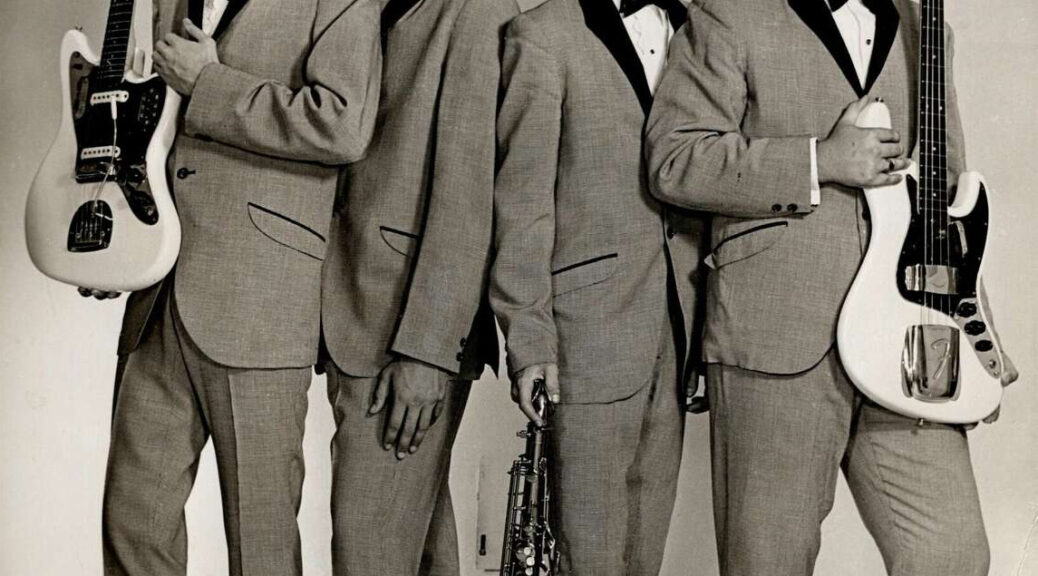
I really appreciate these write-ups! Found the blog looking for info on Dara Puspita and fell in love with your content. Absolutely fantastic, i’m discovering so many great bands thanks to you.
Jarren,
I appreciate the positive vibes, as it’s all a labor of love — courtesy of Chris the Bossman’s devotion to all things 45rpm.
So, Glad you discovered these awesome singles — especially the Lamar one (it smokes!) — by the Coronadoes. More Detroit obscurities are on the way.
Thank you RD for “reviving” the supremely talented Stockwell brothers, Rick and Joe. They are missed. Always highly respected around here, they were also just genuinely nice guys. Everybody loved them! I was fortunate to play with Rick early in my musical adventure, and consider him one of my mentors.
You’re welcome, Dale. It’s a pleasure. We have to hoist a cold one to Ted “The Phantom” Pearson; he brought us here. In untangling his career, the wonderful discovery of all these branches — and twigs — from the Motor City were discovered: the stuff you don’t get in other rock ‘n’ roll books, which is the “jam” of Garage Hangover.